Katherine Bruce-Lockhart认为即将对肯尼亚播音员Joshua Arap Sang进行的审判将为探讨语言和暴力之间的关系提出一些关键的问题。

仇恨言论,或者是诋毁群体成员身份的言论,始终让政策制定者感到头痛,导致自由言论的界限不断被挑战。关于仇恨言论的争辩时常是报纸头条,比如近来Westboro浸信教会在军事葬礼上的反同性恋抗议,又比如非洲国会大会青年领袖Julius Malema因为唱《杀死布尔人》(Shoot the Boer)而被提拔。尽管这些仇恨言论带来了极大冒犯,它们并不总是直接煽动暴力。研究自由言论的学者正在努力划分仇恨言论变为“危险言论”的界点,后者包括“有合理的机会催化或者放大两个群体之间暴力”。政治学家Susan Benesch提出了五个关键定性变量来辨析言论的危险性,提供了一个分析仇恨言论个案的有效模式。这些变量包括言论者的影响性、听众的悲伤或恐惧程度、言论行为本身是否被理解为对暴力的呼吁、社会历史语境、以及言论传播的方式。
卢旺达和肯尼亚这两个国家都在过去二十年中经历过暴力,是辨析仇恨言论何时成为危险言论的有效个案。千秋自由广播电台(Radio Télévision Libre des Mille Collines,Radio RTLM)在卢旺达种族灭绝中的角色已经被广泛记载,也提供了一个何谓危险言论的明确例子。“电台鼓励人们参与到屠杀中来,告诉大家敌人是图西族”,一名种族灭绝幸存者表示,“如果电台没有作出任何声明,那么人们不会蜂拥进攻。”
这一种观点有定量证据,表明千秋自由电台的仇恨言论增加了种族灭绝暴力的参与性。哈佛政治学家David Yanagizawa-Drott在研究卢旺达时运用了一千个遭到种族灭绝的村庄的资料来辨析电台覆盖率对暴力参与性的影响。他的发现对研究仇恨言论的学者有指导性作用。他发现,在有电台全覆盖的社区,民众暴力增加了65%,组织性暴力增加了77%。总体而言,他估算种族灭绝死亡数的9%,或者说图西族死亡人数的45%可以被归于千秋自由电台煽动暴力的结果。这个数据意味着危险言论的力量可以将话语化为行为,其结果对那些生活在暴力环境中的人而言是致命的。
为防止危险言论,肇事者必须被追究责任,而这需要确凿证据表明言论可以促使暴力。这一点有法律先例,包括卢旺达问题国际刑事法庭(International Criminal Tribunal for Rwanda)对千秋自由电台有罪的判例,认为该电台“明确的呼吁对图西族进行灭绝”。国际刑事法院处理的第一起仇恨言论案例涉及肯尼亚电台主持人Joshua Arap Sang。在2007年和2008年后竞选暴力中,Sang是被国际刑事法院以危害人类罪进行审判的四名肯尼亚人之一。Sang是一名用使用卡伦金语言广播的广播员,他是唯一一名非政客被告(其他被告包括现任总统Uhuru Kenyatta,副总统William Ruto),这也是这个案例受到学者广泛关注的原因之一。Sang被控谋杀、驱逐或强行迁移人口以及人身迫害。
该案件于5月28日开庭,成为一件国际刑事法院证明言论和暴力行为之间关系的重要关联的试金石。在许多方面,Sang的案例都回应了Benesch对危险言论的分析:作为一名言论者,他在卡伦金人中有一定的影响力。他的节目每天都有450万肯尼亚听众收听,在卡伦金流亡团体也有听众。他的听众也预先有特别的不满情绪,因为他们相信当时的选举针对Raila Odinga,一名受大多数卡伦金人支持的候选人。Sang的言论本身也被认为是一则武装呼吁,包括“战争已经开始”,“畜牧之民应当割草”,是对畜牧的卡伦金人以及农牧的基库由人(Kikuyu)的口语指代。在社会历史层面,Sang的言论也隐含了冲突,因为肯尼亚在1992年之后的每一次选举都会精力暴力,卡伦金和基库由人在土地所有上有长期摩擦。最后,电台在肯尼亚是一个非常有力的宣传方式,因为它是当地不同白话中最主要的传媒,也因此比其他形式的传媒更接近教育程度不高、或生活在农村的民众。
尽管Sang的案例符合危险言论的标准,对他的审讯还远远没有明确。与卢旺达千秋自由电台不同的是,在肯尼亚选举期间电台节目的脚本留下来的很少。根据人权观察组织的发现,这个案例的仇恨言论多来自于演讲嘉宾,而不是主持人自己,因此将罪行的边界变得模糊。Sang坚持自己的清白,并用自由言论原则为自己辩护。根据Keith Somverville所著的《电台宣传与广播仇恨》(2012),Sang认为有罪判决将会是对自由言论的侵害,“如果他们宋我道Hague我知道自己尽了职,他们会对记者说些甚么?”Sang的审判的结果很可能会影响肯尼亚白话电台的自由度,也会帮助人们对暴力语境中的危险言论有更广泛的理解。
终极而言,我们需要对仇恨言论和危险言论的划分作出更多研究和讨论。无论在卢旺达、肯尼亚还是其他刚经历大规模暴力的国家,明确危险言论的边界都是一种必要的努力。对讨论言论自由和防止暴力而言,决定言论何时、为何、如何为暴力作跳板将始终是一个充满挑战而又关键的问题。
Katherine Bruce-Lockhart是一名达伦多夫学者,她目前在牛津圣安东尼学院攻读非洲研究硕士。他曾经在加拿大和南非做过记者,也曾在纳米比亚、尼泊尔和加拿大从事过研究和非政府组织工作。

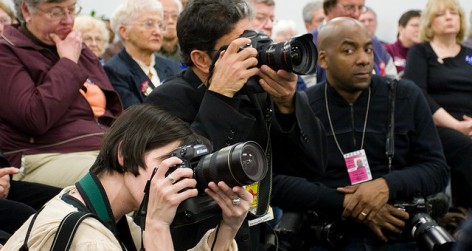
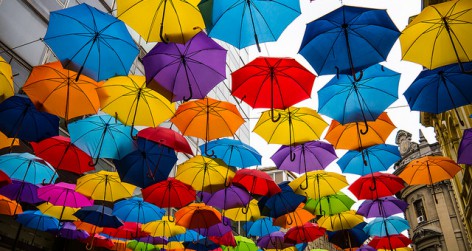

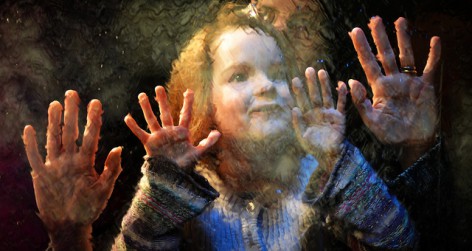
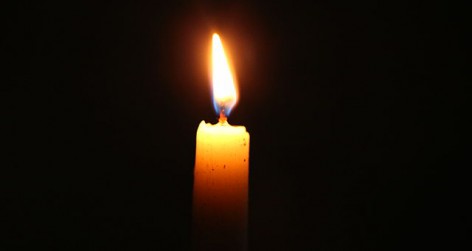

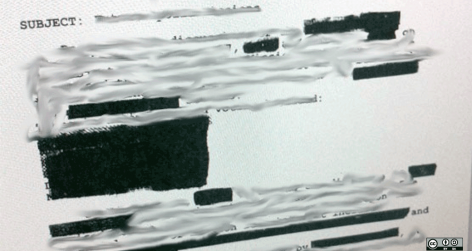
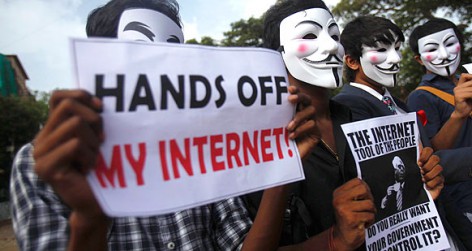
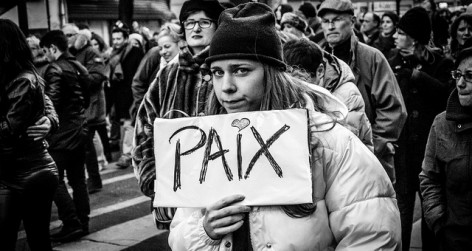
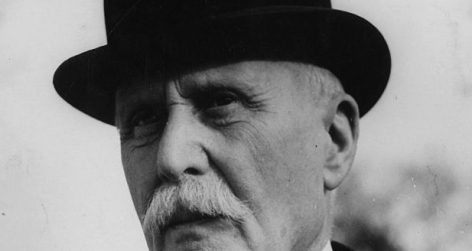
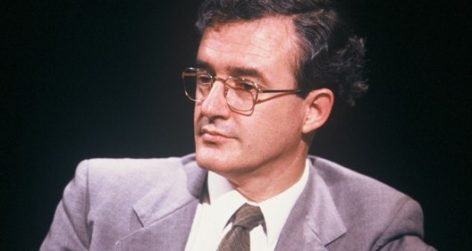
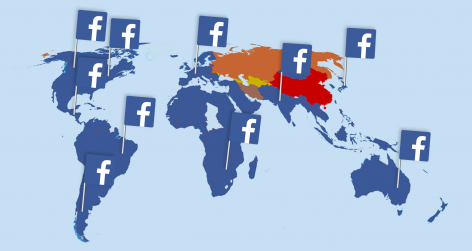
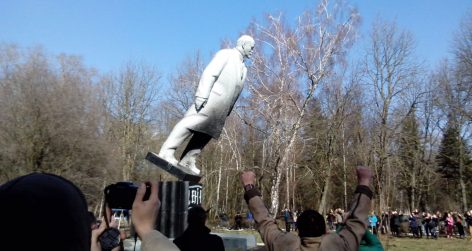
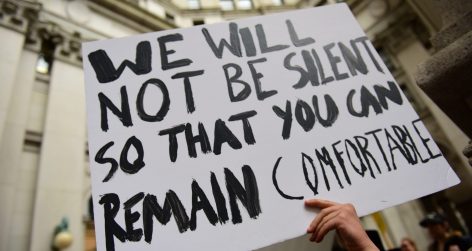

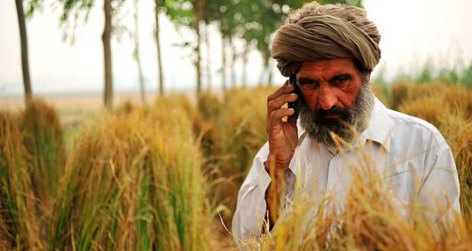
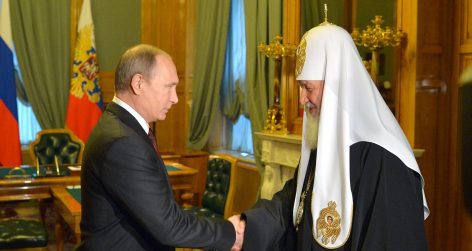


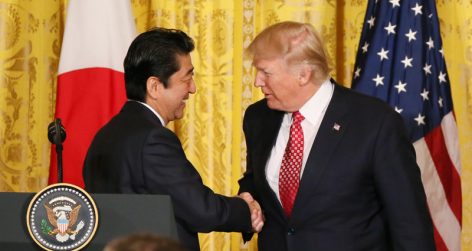
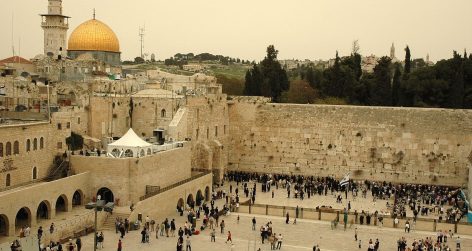

reply report Report comment
Dear Ms. Bruce-Lockhart,
In our IB English Language and Literature course, we have been discussing the complex issue of freedom of expression. We realize that the borders between hate speech and dangerous speech are obscured and muddled. We believe that, although these two specific cases demonstrate dangerous speech and should be punishable by law, we should be careful not to
sacrifice the right to express our opinions, as seen in the case of Geert Wilders.
Of Susan Benesch’s five key qualitative variables, perhaps the most important one is “whether or not the speech act is understood as a call to action.” We believe that this is pivotal in separating utterances into those that should be punishable, and those that should be protected by the ideals of free speech. In her paper “Dangerous Speech: A Proposal to Prevent Group Violence”, Benesch goes into more detail about how to judge this criterion:
Did the speech describe the victims-to-be as other than human, e.g. as vermin, pests, insects or animals?
Did the speech assert that the audience faced serious danger from the victim group?
Did the speech contain phrases, words, or coded language that has taken on a special loaded meaning, in the understanding of the speaker and audience?
In Kenya, Joshua Arap Sang used his radio show Le Ne Emet, to communicate with the native Kalenjin and to spread hate messages against the Kikuyu, Kambas and Kisiis, such as:
“the mongoose is at the chickens”
“the people of the milk should clear the weeds from the grass”
Sang instructed listeners to burn properties in Eldoret belonging to non-Kalenjins by saying, “let’s not destroy our own”
Sang’s language shows how he monitored the violence through these coded metaphors. It seems to fall under all of Benesch’s criteria to be classified as dangerous speech. The victimized minorities are referred to as weed that must be cleared. Sang makes it clear for the Kalenjins that they are the “people of the milk” that need to take action against Kikuyu, Kambas and Kisiis, by destroying their property for example.
We agree that “perpetrators of dangerous speech must be held accountable”, but although Sang’s discourse seems to fall under the category of dangerous speech, the results of his ongoing trial in the ICC remain far from definite. Language surely can incite violence, but the complex nature of dangerous speech, having these shady borders, makes judging it a difficult task.
Contrast this to the case of Geert Wilders, a Dutch right-wing politician who was recently acquitted of inciting hatred against Muslims. According to Wilders, “Islam is not a religion, it’s an ideology, the ideology of a retarded culture” and “the Koran is a fascist book which incites violence. That is why this book, just like [Adolf Hitler’s] Mein Kampf, must be banned.” This is where the boundary of hate speech and dangerous speech becomes highly debatable.
Wilders does not specifically launch an attack on Muslims, but on their religion and their culture. According to him, “It’s not my intention to have anything at all to do with violence. On the contrary, I despise violence – I just want a debate.” His call to “get rid of that woman-humiliating Islamic symbol” (the veil), cannot be classified as a call to violence.
So it is clear that Wilders does not fall under what Benesch calls ‘dangerous speech’. But is he not provoking discrimination against Muslims? We believe that Wilders has the right to express his opinion, even if we might not agree with it. If Wilder’s actions become punishable by law, the slippery slope may continue, and the whole notion of free speech will be jeopardized. In Wilder’s words, “I am on trial, but on trial with me is the freedom of expression of many Dutch citizens”.
On the other hand, in the Rwandan case, some phrases that were broadcasted by the RTLM transcend the blurry margin and are obviously dangerous speech:
“You have to kill [the Tutsis], they are cockroaches…”
“All those who are listening to us, arise so that we can all fight for our Rwanda… Fight with the weapons you have at your disposal… We must all fight [the Tutsis]; we must finish with them, exterminate them, sweep them from the whole country… There must be no refuge for them, none at all.”
“I do not know whether God will help us exterminate [the Tutsis] …but we must rise up to exterminate this race of bad people… They must be exterminated because there is no other way.”
This ticks all of Benesch’s boxes. Undoubtedly, freedom of speech should not allow these crimes against humanity to go unpunished, and we believe that the life sentences that some of the members of RTLM were given are just.
Although we agree that “to prevent dangerous speech, perpetrators must be held accountable”, we always run the risk of giving over to the emotional sensibilities of the victims and restricting freedom of expression to save them from discrimination rather than bodily harm. It is difficult to draw boundaries on what should and should not be allowed, and Benesch’s variables do help, but in order to protect the ideals of freedom of expression, it is essential that these boundaries are agreed upon soon, before the slippery slope continues.
Sincerely,
A. Serbetsoglou, A. Strating, E. Zomer
reply report Report comment
Dear A. Serbetsoglou, A. Strating, E. Zomer,
Thank you very much for your comments. As you point out, some cases of dangerous speech are much more clear cut that others. The role of RTLM in the Rwandan genocide is certainly one of the clearest cases of dangerous speech, while those of Sang and Wilders are more contested. Sang’s trial at the ICC is a very important test of the boundaries of dangerous speech, and it will be interesting to see how his defence and the prosecution against him unfold. Ultimately, as you suggest, more clear boundaries between hate speech and dangerous speech are necessary, both to protect freedom of expression and to prevent violence.
You can find more on the Wilders case on the website: http://freespeechdebate.com/en/case/geert-wilders-on-trial/
reply report Report comment
Many thanks for this very thoughtful comment. We will pass it on to Katherine Bruce-Lockhart, who I hope will feel able to respond.
reply report Report comment
Hello there Mrs. Katherine Bruce-Lockhart,
We are a group of students in an English language and literature class currently working on language and taboo. We have read your piece and we agree with the main points. We believe that there is indeed a thin line between free speech and hate speech but we too are struggling with determining how, when and why hate speech “serves as a springboard to violence.” However a point raised during our discussion was about how you draw the line between hate speech and dangerous speech.
You define dangerous speech as speech that incites violence against a group and hate speech as speech that denigrates people on the basis of their membership in a group. That raises the questions then: should dangerous speech be punished when it does not incite violence? Or would that just be considered as hate speech? However hate speech could also hurt a person or a group of people to the point that they commit suicide. Take the case of eleven year-old Carl Joseph Walker-Hoover, who killed himself after enduring months of anti-gay bullying at his school in Springfield, Massachusetts. Should that form of hate speech be punished?
We believe that dangerous speech always starts with forms of hate speech and if restrictions were applied on hate speech, we could prevent it from developing into
dangerous speech that incites violence and provokes deaths. One could argue that the Rwandan genocide could have been prevented if the ICC had stepped in when the hate speech towards the Tutsi’s began. Therefore from the very start of the conflict, where the media was dehumanizing the Tutsi’s or the Kalenjin people by using statements such as “cut the grass” or calling them names such as cockroaches (‘inyenzi’).
‘If the radio had not declared things, people wouldn’t have gone into the attacks”
If hate speech aims to attack the reputation of a person or group of people, than most forms of hate speech are indirectly promoting violence and should be classified as forms of dangerous speech.
How far do free speech laws go in protecting people that are spreading hate speech? You can’t really make laws that deny people expressing their opinions.
You argue that dangerous speech should be analyzed by looking at factors such as the level of a speaker’s influence, the grievances of the audience, whether or not the speech is understood as a call to violence, the social and historical context and the way in which the speech is disseminated. But how do you determine whether or not a speaker has enough influence to affect action, and when looking at factors to do with those listening to the speech, we consider it impossible to make a generalization because different people will have different views.
The fact that we can not make a generalization is supported by the fact that different countries have different legal views on hate speech. Kenan Malik, describes the inconsistency of the hate speech laws in different countries: Britain bans abusive, insulting, and threatening speech. Denmark and Canada ban speech that is insulting and degrading. India and Israel ban speech that hurts religious feelings and incites racial and religious hatred. In Holland, it is a criminal offense deliberately to insult a particular group. Australia prohibits speech that offends, insults, humiliates, or intimidates individuals or groups. Germany bans speech that violates the dignity of, or maliciously degrades or defames, a group. And so on. In each case, the law defines hate speech in a different way.
Here in The Netherlands, a quite controversial debate went on in 2011. Stated in a BBC news article, far-right politician Geert Wilders, who described Islam as “fascist”, was acquitted of inciting hatred against Muslims. According to the judge, Wilders’ comments on comparing the Koran to Hitler’s Mein Kampf were “acceptable within the context of public debate.” Although the speeches given by this political figure have said to have caused increasing hatred and violence towards the Islamic society in the Netherlands,
the Geert Wilders trial is an example of how people in the Netherlands have recently become more tolerant of differences in opinions. This allows people to express how they feel about specific things but can also be harmful to certain groups as it allows expressing hate towards a social group. Only the police and the queen are protected against any forms of hate speech.
Therefore we have come to believe that hate speech is a form of free speech. However there should be clear line between hate speech and dangerous speech, and we should apply restrictions to all forms of dangerous speech. Even though hate speech also incites violence we believe that there must be a difference between the two and in order to determine this difference we need to look at the specific factors.
We hope to get a favourable response from you!
Your fellow readers.
reply report Report comment
Thank you very much for your comments and discussion of these important issues. You raise some of the key quandaries in the debates on hate speech and dangerous speech that have yet to be fully answered. As you discuss, there is not a universally recognized definition of dangerous speech, and the understanding of dangerous speech changes greatly depending on the socio-historical context. In the cases I examined, the type of speech employed was arguably ‘dangerous speech’ using Benesch’s criteria. I find her framework very useful, but it is one approach and certainly other approaches can be explored. More work is needed to define what exactly constitutes dangerous speech and how it is different from hate speech.
I recommend that you look at this video of a United Nations panel on the topic of dangerous speech. It raises many interesting questions about the differences between hate speech and dangerous speech, and also examines how we should limit dangerous speech in order to prevent violence. http://www.worldpolicy.org/blog/2013/02/06/lets-talk-about-genocide
reply report Report comment
Hello, we are three students from the American School of the Hague taking a Language and Literature course. We have currently been studying hate speech and taboo, and we’re interested in exploring the influence of the social-historical background of a country and how it allows hate speech to become dangerous speech. Hate speech should therefore be persecuted, during periods in which a country is experiencing severe grievances and the speech calls for direct action against a particular group.
This applies to the case of Kenya in 2007. After the country’s presidential elections in late 2007, in which the winner was Mwai Kibaki of the Party of National Unity (PNU), violence spurred between PNU supporters and the Orange Democratic Movement supporters (ODM). At this time, Kenya was experiencing high crime rates. Stated from The New York Times, gangs were forcing their way into homes “dragging out people of certain tribes and clubbing them to death,” as the ODM’s supporters believed the election had been rigged against their leader. This intense tension between the political and ethnic groups created fertile ground for the outbreak of violence.
Joshua Arap Sang, the KASS FM radio broadcaster, is in trial in the International Court of Justice in The Hague, along with William Samoei Ruto, the Deputy President of Kenya, for crimes against humanity. Sang is a quintessential player in the 2007-2008 Kenyan crisis and is convicted of spreading hate messages, broadcasting false news to incite the Kalenjin people. Sang is an ODM supporter, and Ruto used Sang’s role as a radio broadcaster to collect supporters and to create codes so Sang’s listeners would know when to attack the rival ethnic group, Kikuyu. The ICC has charged Sang and Ruto of crimes against humanity in three subtopics: murder, forcible transfer of people, persecution of an ethnic and political groups and crimes of rape and sexual abuse.
Sang’s role in the Kenyan crisis has parallels with Joseph Goebbels, the Minister of Propaganda in Hitler’s Third Reich. There seems a direct correlation between Hitler’s rise to power and the socio-economic despair that Germany experienced due to the Great Depression, according to historian Robert Gellately. Goebbels exploited the social and economic situation through means of film, art, posters, etc, to rally support for the Nazi Party and hence the support for their anti-Semitic cause, just as Joseph Sang used his radio to gather support for the ODM and hatred for the PNU. Both reached a desperate population that incited them to target their rivals.
Goebbels, an avid supporter of the Nazi Party, was in charge of modern propaganda to rally support but also galvanize anti-Semitism. In fact, Goebbels’ propaganda program incited Kristallnacht, where Jews were purged from German society and synagogues were destroyed. Furthermore, Goebbels used film to make the most anti-Semitic movies, increasing the hatred of the Jewish population and thus making the German population accept and encourage the deportation and deaths of six million Jews.
Both Goebbels and Sang used a scapegoating technique where they targeted an ethnic population and blamed them of all the problems people which they were facing. In Germany, the Jews were blamed for the start of the Great Depression, and were labeled as rich people while the rest were suffering extreme poverty. In Kenya, the Kikuyu were dominant in politics and so the Kalenjin held them accountable for everything that was wrong. Scapegoating creates abhorrence for a targeted population which makes it easier to incite violence towards them. This is what exactly occurred in both the Third Reich and in Kenya in 2007.
Sang’s radio station RTLM, gained an audience of four and half million quotidian Kenyan listeners. Amnesty International states that Eldoret, where his radio was based, “was a scene of some of the worst bloodshed”.
Coincidence? We think not.
Audience plays a major role in hate crime. This influences the switch from hate speech to dangerous speech because it allows for words to morph into action. As the ICC’s official statement puts it, “Sang was using his radio program to collect supporters and provide signals to member of the plan on when and where to attack,” especially targeting citizens who didn’t have access to other forms of media. This allows for RTLM to give a biased view to the people who are less educated, as Katherine Bruce-Lockhart says.
Yes, Sang will argue that he can’t be convicted under free speech but he is using language to manipulate his audience, ultimately turning them to violence. This seems more plausible in a nation that suffers from interethnic rivalries.
Hate speech will turn into dangerous speech when the social and historical context calls for it. Sang exploited popular discontent among the Kalenijn ethnic community (whom supported ODM) and took advantage of this troubled social situation to encourage aggression against the PNU supporters. He used his radio to clearly organize the crime and rally up supporters – a manifestation of his deliberate intention to incite violence.
reply report Report comment
Thank you very much for your comments. It is certainly important to consider historical examples of dangerous speech and the case of Goebbels and Nazi propaganda is an extreme one. At this point, we know much more about the extent of dangerous speech in Nazi Germany than we do in Kenya. As Sang’s trial unfolds, we will hopefully understand more about his role in the post-election violence. Certainly, his case is less clear cut than that of RTLM in the Rwandan genocide and the use of propaganda in Nazi Germany.
reply report Report comment
The Thin Line Between Hate Speech and Dangerous Speech
We are three students high school students in the I.B SL Language and Literature class studying the implications of hate speech.
The difference between hate speech and dangerous speech has been an increasing discussion topic as we become more aware of the power of language, and its dangers. Katherine Bruce-Lockhart states the difference between hate and dangerous speech and how determining that difference is pivotal in bringing offenders to justice. Dangerous speech leads to horrible acts of violence as seen in the Rwandan Genocide, where it is estimated that around forty-five thousand deaths were incited by the speeches broadcasted by Radio RTLM. The problem is that in many cases it is not so clear whether it is dangerous speech or just hate speech because of the difficulty in defining dangerous speech. It is that difficulty that makes the prosecution of perpetrators of hate or dangerous speech so difficult, as seen in Joshua Arap Sang’s ongoing trial. The difference of dangerous speech and hate speech is more complicated than what the article suggests, thus making it more difficult to set legal boundaries to bring perpetrators of such acts to justice.
The article expresses dangerous speech as “speech that has a “reasonable chance of catalyzing or amplifying violence by one group against another.” The differences that they decided differentiates one from another is one whose connotations imply violence. When looking at how the article distinguishes hate speech from dangerous speech, they do not take into account the context and the meaning that is behind the speech. In the case of athletic chants, the boundaries that the article set do not fit. The words that may be used in some chants, the word’s connotations may “ amplify violence”, however, the denotation do not. As seen in the example of a game between Notre Dame ( The Fighting Irish) and North-Western (Wildcats), the Wildcat fans were chanting “ Kill the Fighting Irish, kill the Fighting Irish”. The denotation of the work “kill” is to cause death however in the context its meaning does not imply violence of any kind.
The Westboro Baptist Church (WBC) has been gaining notoriety as news spread of their picketing of funerals of U.S soldiers, politicians and even children. WBC protesters stand outside holding signs with the words”Thank God for IEDs”, “You are going to hell”, “Pray for more dead soldiers”, “Thank God for dead soldiers”. The message that WBC conveys is one of complete hatred towards homosexuals and of those who accept them, their protests have been so hateful, so offensive that hundreds of thousands of people have brought their protests up to the Supreme Court in the hope that something will be done to stop the protests. WBC protesters are clearly engaging in hate speech, but because it doesn’t incite violence or create a dangerous situation it is not considered dangerous speech, and therefore are not doing anything illegal. We believe that the protests have no objective other than to offend and insult those who support homosexuals, and therefore those WBC protesters should not be protected by the 1st amendment and be held against the law.
We understand how difficult it is to legally set laws that prohibit dangerous speech. People interpret things in different ways which would make the laws that are placed, subjective rather than objective. There should be no legal boundaries put on hate speech, since it goes against the right of free speech. Also, when laws do prohibit hate speech, certain people might interpret the hate speech differently. However, there is an exception. Speech that causes imminent danger or speech that leads to someone taking dangerous action could and should have legal boundaries.
When laws are created that ban other forms of hate speech, it does not reduce or eliminate that hate speech, it does the opposite. Kenan Malik says, “ you cannot reduce or eliminate bigotry simply by banning it.” The example he uses to support this is the example of Britain prohibiting incitement to racial hatred in 1965. When the Race Relations Act was passed, the next decade in British History was the most racist in British history, despite the fact that racial hatred was prohibited. When Britain’s laws were revoked and time had passed, racism decreased. This is because of the social changes that happened. Another example that supports Kenan Malik’s argument is the Westboro Baptist Church. Many countries have banned the bigotry that the Westboro Baptist Church uses, yet they continue to do it. The Westboro Baptist Church members are banned from entering both Britain and Canada because of their bigotry, but they keep picketing at places such as public funerals.
In the case of Snyder v. Phelps (Phelps is the leader of the Westboro Baptist Church) the Supreme Court of the United States has ruled that speech on a public sidewalk, about a public issue, cannot be liable for a tort of emotional distress. They made this ruling because the WBC’s protests do not explicitly cause imminent danger nor are their protests calls to a dangerous action. The WBC’s protests are considered hate speech, not dangerous speech. This supports that people interpret hate speech differently and laws that are imposed on free speech become subjective. That is why legal boundaries should not be imposed on speech unless it causes imminent danger or is a call to a dangerous action.
The article’s idea that dangerous speech is one that incites violence towards others is over simplistic as it does not take into account the context and connotations of the speech. During the game Notre Dame against North-western the fans who shouted the chant would be considered criminals according to the article, which is quite ridiculous. The chant is clearly not a call to violence towards the opponents, but rather an attempt to support their team. The difference between hate and dangerous speech is so small, making it really difficult to define.
reply report Report comment
Thank you very much for your comments. It is certainly true that defining the boundary between hate speech and dangerous speech is extremely difficult. I agree that more work must be done in order to delineate this boundary more carefully, as I mentioned at the end of my article.
As you say, not all cases of hate speech can be considered dangerous speech, as I mentioned in relation to the Westboro Baptist Church. I find Susan Benesch’s framework on dangerous speech to be the most useful for determining whether or not speech can be considered dangerous. The case of the sports game between the Fighting Irish and Notre Dame is an interesting one, but as you say, very different from the Rwandan genocide or the post-election violence in Kenya. I would argue, as you do, that this case would not be considered ‘dangerous speech’ using Benesch’s definition. She uses many variables to determine whether speech is dangerous or not. As listed in the article, these include: the level of a speaker’s influence, the grievances or fears of the audience, whether or not the speech act is understood as a call to violence, the social and historical context, and the way in which the speech is disseminated. Thus, context is very important, as you suggest, and this is something taken into consideration in Benesch’s framework and in the cases of Rwanda and Kenya. The fans in the sporting game would thus not be considered criminal using Benesch’s framework.
Ultimately, as you suggest, it is imperative that the line between hate speech and dangerous speech is more carefully drawn. It is crucial to keep on having these debates in order to further our understanding.
I also recommend that you read the case study on the Westboro Baptist Church available on this website, as it may provoke more critical discussion and debate: http://freespeechdebate.com/en/case/westboro-baptist-church-the-right-to-free-speech/
reply report Report comment
This is an interesting piece. My question would be: You mentioned the Kass FM rhetoric was in response to a perceived rigged election where most Kalenjin identified with candidate Raila Odinga. Do you think the way in which Odinga encouraged protests against the election count as inciting hatred? We can understand why Ruto and Kenyatta were indicted on suspicion of directly organising violence, but if Arap Sang is on trial for stirring things up vocally, surely Odinga fits the same category?
reply report Report comment
The first problems occurred in this situation we must confirm is that hate speech definitely not a type of free speech. There is no doubt that the boundary of freedom owned by a person couldn’t hinder the freedom of other people.
That means: Everyone has right to express himself, and should protect other right equally. To hurt others can not get free, but detain own soul.